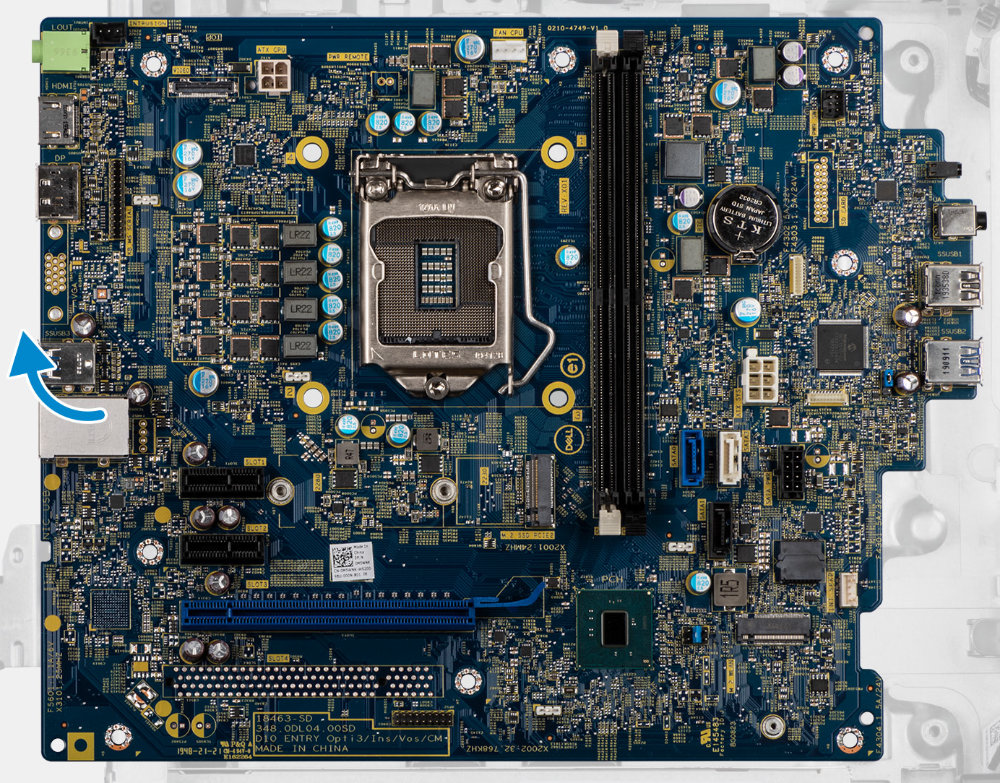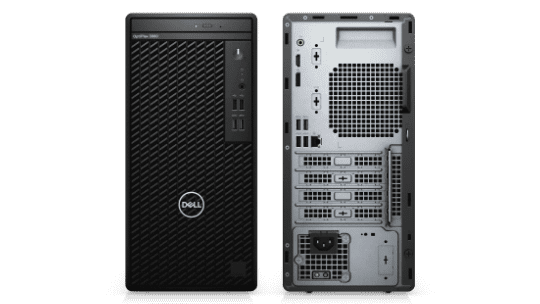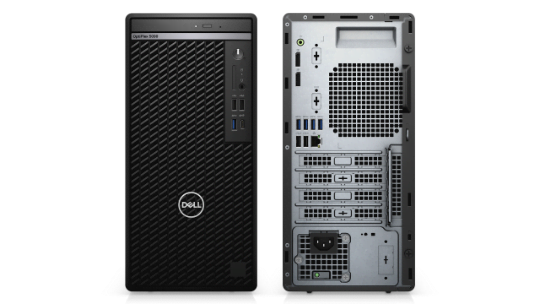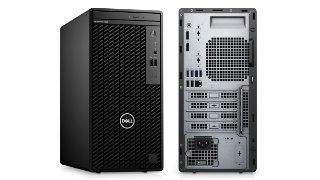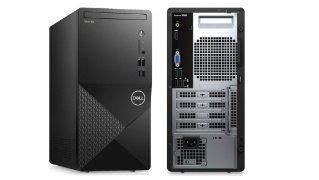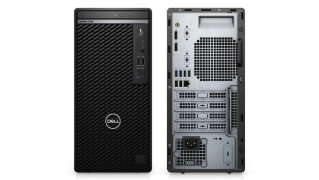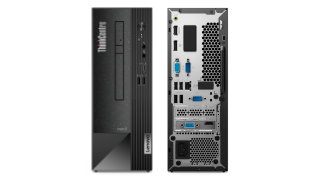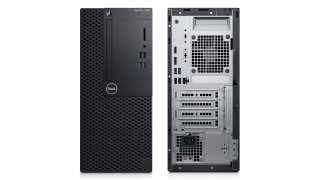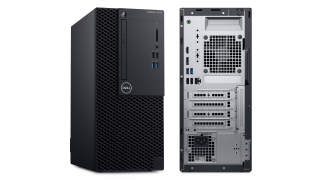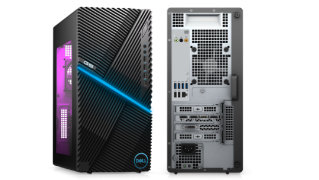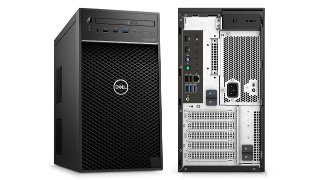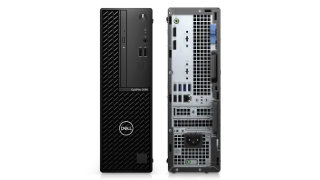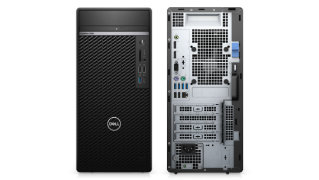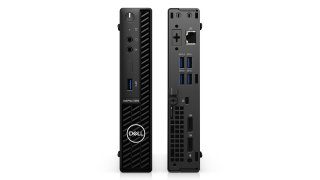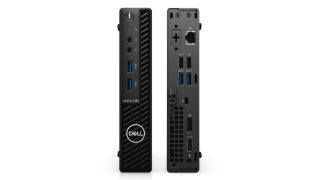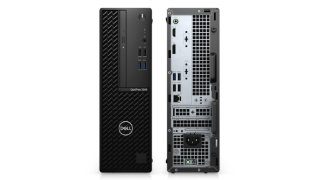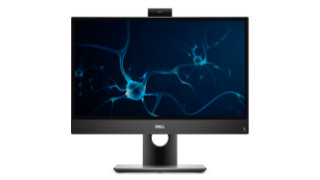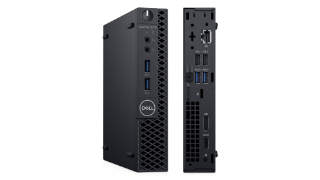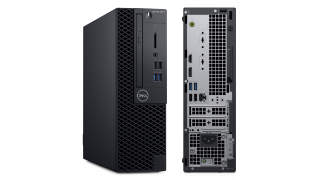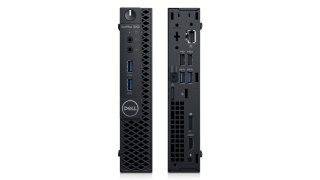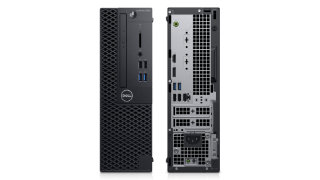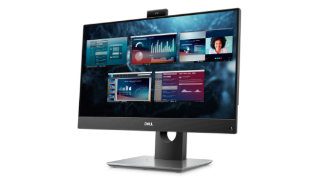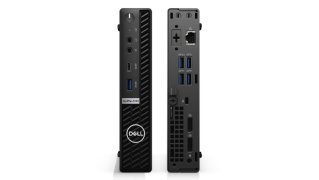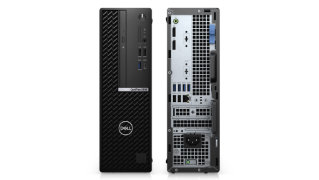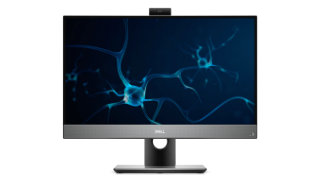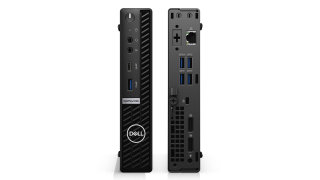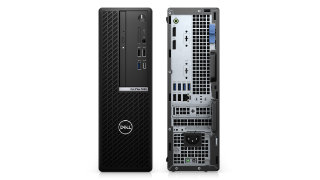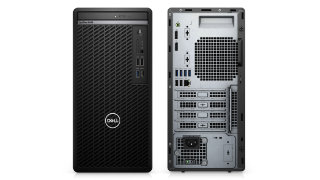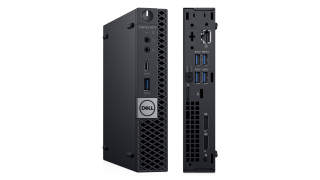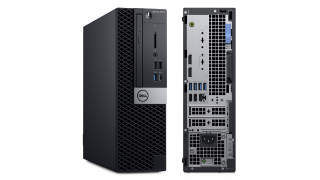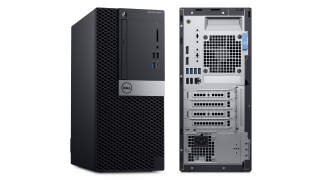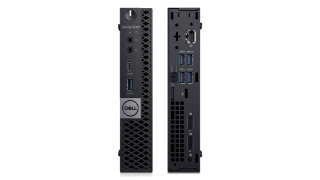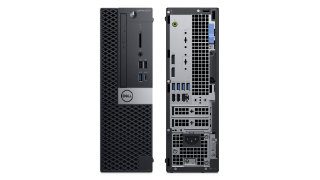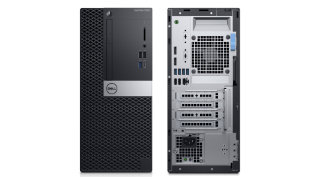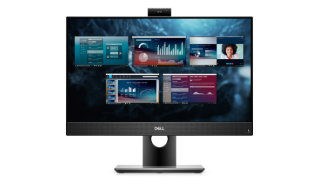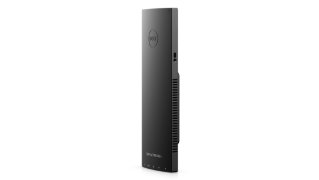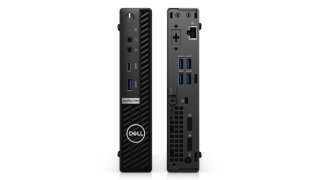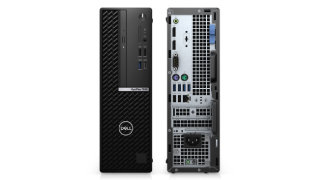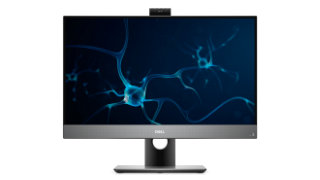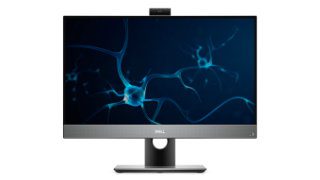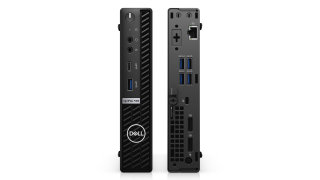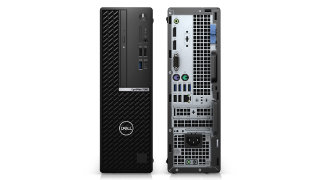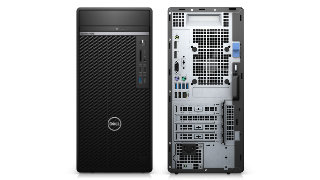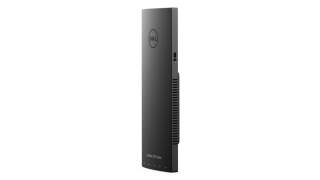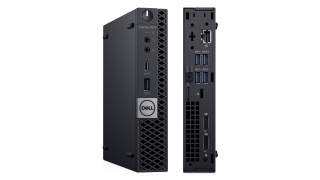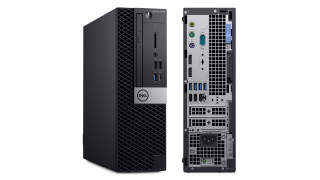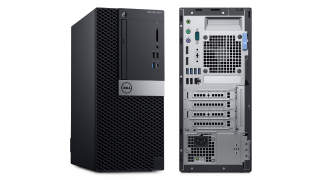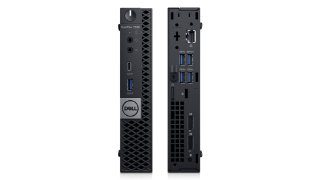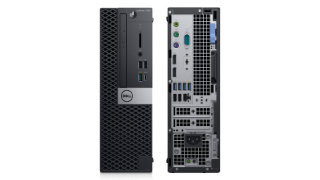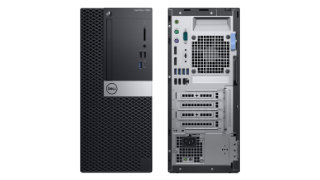Specs Comparison Key Features What's new Intel® Q470 Chipset 10th Generation Intel Comet Lake Processors Up to Intel Core Intel® Core™ i5-10600 (6 cores, 12T, 12MB Cache, up to 4.60 GHz) Up to AMD Radeon RX 640 (4GB GDDR5). Up to 64GB 2666MHz DDR4 memory Up to 2TB of PCIe NVME SSD. Up to 260W with 80 Plus Platinum PSU. New 10th and 11th Gen Intel Core Processors. Up to Intel Core i7-11700 (8 cores/ 16 threads). Up to NVIDIA® GeForce® GTX 1660 Super, (6GB GDDR6). Up to 64GB 3200MHz DDR4 memory. Up to 128GB 2933MHz DD4 memory.
Availability Dell Optiplex 3080 Tower Dell Optiplex 5090 Tower Released 2020 2021 Release Info Announced on September 3, 2020. Announced on May 28, 2021. Pricing 10th Gen Intel Processor
11th Gen Intel Processor Generations
Dell Optiplex 3080 Tower Price
Dell OptiPlex 3080 Full Size Tower Business Desktop, Intel Hexa-Core i5-10505(Beat Core i7-8700B),32GB DDR4 RAM,1TB PCIe SSD + 1TB HDD,AC WiFi,Bluetooth 5.0,Keyboard and Mouse, Windows 11 Pro(Renewed)
Dell OptiPlex 3080 Desktop SFF - Intel Core i5 10th Gen - i5-10500 - Six Core 4.5Ghz - 256GB SSD - 16GB RAM - Windows 10 Pro (Renewed) By Dell
$329.00
Was: $349.99
Dell OptiPlex 3080 Mini-Tower Desktop Computer – Intel Core i7-10700, 32GB RAM, 1TB NVMe SSD, 4K Monitor Support DisplayPort, HDMI, DVD, USB Type-C, AC Wi-Fi, Bluetooth - Windows 10 Pro (Renewed) Dell Optiplex 5090 Tower Price
Dell Optiplex 5090 SFF Desktop | Core i7-10700 - 512GB SSD Hard Drive - 16GB RAM | 8 cores @ 4.8 GHz Win 11 Pro Black (Renewed)
Dell Optiplex 7060 SFF Desktop Computer PC | Intel 8th Gen i7-8700 (6 Core) | 32GB DDR4 Ram 512GB NVMe M.2 SSD | Built-in WiFi & Bluetooth | Windows 11 Pro | Wireless Keyboard & Mouse(Renewed)
Dell OptiPlex 5000 5090 SFF Small Form Factor Desktop (2021) | Core i5-256GB SSD - 8GB RAM | 6 Cores @ 4.6 GHz - 10th Gen CPU Win 11 Pro (Renewed)
Exterior Dell Optiplex 3080 Tower Dell Optiplex 5090 Tower Size Comparison Dimensions 11.5” x 12.76” x 6.1” (292 x 324 x 155 mm) 11.53” x 12.75” x 6.06” (293 x 324 x 154 mm) Weight Up to 15.89 lb (7.2 kg) Up to 15.96 lb (7.24 kg) Colors Black
Black
Keyboard and Trackpad Dell KB216 Wired Keyboard English Dell KB522 Business Multimedia Keyboard (US) Dell KB813 Smart Card Keyboard (US) Dell Pro Wireless Keyboard and Mouse - KM5221W - English No Keyboard Dell KB216 Wired Keyboard English Dell Pro Wireless Keyboard and Mouse - KM5221W - English Dell KB522 Business Multimedia Keyboard (US) Dell KB813 Smart Card Keyboard (US) No Keyboard Selected Ports Front
Rear 4 x USB-A 2 x USB 2.0 (480 Mbps) with Smart Power on
1 x DisplayPort 1.4 Supports 4K@120Hz.
1 x HDMI 1.4 Supports 4K@24Hz or 1080p@120Hz.
1 x RJ-45 Gigabit Ethernet.
1 x Audio port Line-out audio port with re-tasking to Line-in (Rear).
1 x Kensington Lock Slot 1 x Power Connection Optional Ports Front
Rear 2 x USB-A USB 2.0 (480 Mbps) with Smart Power On.
4 x USB-A USB 3.2 Gen 1 (5 Gbps).
2 x DisplayPort DisplayPort 1.4 supports 4K@120Hz.
1 x RJ-45 Gigabit Ethernet.
1 x Audio Jack Re-tasking Line out/Line in audio port.
1 x Kensington Lock Slot 1 x Power Connection Optional Ports
Chasis Dell Optiplex 3080 Tower Dell Optiplex 5090 Tower Form Factor Mini Tower Mini Tower Power Supply 260W 80+ Bronze 85% Efficiency
300W 80+ Platinum 92% Efficiency
360W 80+ Platinum 92% Efficiency
Optical Drives 8x DVD+/-RW 9.5mm ODDOptional.
8x DVD+/-RW 9.5mm ODDOptional.
Internal Specs Dell Optiplex 3080 Tower Dell Optiplex 5090 Tower Chipset Intel® Q470 Chipset Intel® Q570 Chipset Processor 10th Gen Intel® Celeron® G5900 2C/2T, 3.40 GHz, 2MB SmartCache, 58W
10th Gen Intel® Celeron® G5905 2C/2T, 3.50 GHz, 4MB SmartCache, 58W
10th Gen Intel® Pentium® Gold G6400 2C/4T, 4.00 GHz, 4MB SmartCache, 58W
10th Gen Intel® Pentium® Gold G6405 2C/4T, 4.10 GHz, 4MB SmartCache, 58W
10th Gen Intel® Core™ i3-10100 4C/8T, 3.60 → 4.30 GHz, 6MB SmartCache, 65W
10th Gen Intel® Core™ i3-10105 4C/8T, 3.70 → 4.40 GHz, 6MB SmartCache, 65W
10th Gen Intel® Core™ i3-10300 4C/8T, 3.70 → 4.40 GHz, 8MB SmartCache, 65W
10th Gen Intel® Core™ i3-10305 4C/8T, 3.80 → 4.50 GHz, 8MB SmartCache, 65W
10th Gen Intel® Core™ i5-10400 6C/12T, 2.90 → 4.30 GHz, 12MB SmartCache, 65W
10th Gen Intel® Core™ i5-10500 6C/12T, 3.10 → 4.50 GHz, 12MB SmartCache, 65W
10th Gen Intel® Core™ i5-10505 6C/12T, 3.20 → 4.60 GHz, 12MB SmartCache, 65W
10th Gen Intel® Core™ i5-10600 6C/12T, 3.30 → 4.80 GHz, 12MB SmartCache, 65W
10th Gen Intel® Pentium® Gold G6405 2C/4T, 4.10 GHz, 4MB SmartCache, 58W
10th Gen Intel® Pentium® Gold G6505 2C/4T, 4.20 GHz, 4MB SmartCache, 58W
10th Gen Intel® Core™ i3-10105 4C/8T, 3.70 → 4.40 GHz, 6MB SmartCache, 65W
10th Gen Intel® Core™ i3-10305 4C/8T, 3.80 → 4.50 GHz, 8MB SmartCache, 65W
10th Gen Intel® Core™ i5-10400 6C/12T, 2.90 → 4.30 GHz, 12MB SmartCache, 65W
10th Gen Intel® Core™ i5-10500 6C/12T, 3.10 → 4.50 GHz, 12MB SmartCache, 65W
10th Gen Intel® Core™ i5-10505 6C/12T, 3.20 → 4.60 GHz, 12MB SmartCache, 65W
10th Gen Intel® Core™ i5-10600 6C/12T, 3.30 → 4.80 GHz, 12MB SmartCache, 65W
10th Gen Intel® Core™ i7-10700 8C/16T, 2.90 → 4.80 GHz, 16MB SmartCache, 65W
11th Gen Intel® Core™ i5-11400 6C/12T, 2.60 → 4.40 GHz, 12MB SmartCache, 65W
11th Gen Intel® Core™ i5-11500 6C/12T, 2.70 → 4.60 GHz, 12MB SmartCache, 65W
11th Gen Intel® Core™ i5-11600 6C/12T, 2.80 → 4.80 GHz, 12MB SmartCache, 65W
11th Gen Intel® Core™ i7-11700 8C/16T, 2.50 → 4.90 GHz, 16MB SmartCache, 65W
Integrated Graphics 10th Gen Intel® Celeron® G5900 Intel® UHD Graphics 610 350 → 1050 MHz
10th Gen Intel® Celeron® G5905 Intel® UHD Graphics 610 350 → 1050 MHz
10th Gen Intel® Pentium® Gold G6400 Intel® UHD Graphics 610 350 → 1050 MHz
10th Gen Intel® Pentium® Gold G6405 Intel® UHD Graphics 610 350 → 1050 MHz
10th Gen Intel® Core™ i3-10100 Intel® UHD Graphics 630 23 Execution Units, 350 → 1100 MHz
10th Gen Intel® Core™ i3-10105 Intel® UHD Graphics 630 23 Execution Units, 350 → 1100 MHz
10th Gen Intel® Core™ i3-10300 Intel® UHD Graphics 630 23 Execution Units, 350 → 1150 MHz
10th Gen Intel® Core™ i3-10305 Intel® UHD Graphics 630 23 Execution Units, 350 → 1150 MHz
10th Gen Intel® Core™ i5-10400 Intel® UHD Graphics 630 24 Execution Units, 350 → 1100 MHz
10th Gen Intel® Core™ i5-10500 Intel® UHD Graphics 630 24 Execution Units, 350 → 1150 MHz
10th Gen Intel® Core™ i5-10505 Intel® UHD Graphics 630 24 Execution Units, 350 → 1200 MHz
10th Gen Intel® Core™ i5-10600 Intel® UHD Graphics 630 24 Execution Units, 350 → 1200 MHz
10th Gen Intel® Pentium® Gold G6405 Intel® UHD Graphics 610 350 → 1050 MHz
10th Gen Intel® Pentium® Gold G6505 Intel® UHD Graphics 630 350 → 1100 MHz
10th Gen Intel® Core™ i3-10105 Intel® UHD Graphics 630 23 Execution Units, 350 → 1100 MHz
10th Gen Intel® Core™ i3-10305 Intel® UHD Graphics 630 23 Execution Units, 350 → 1150 MHz
10th Gen Intel® Core™ i5-10400 Intel® UHD Graphics 630 24 Execution Units, 350 → 1100 MHz
10th Gen Intel® Core™ i5-10500 Intel® UHD Graphics 630 24 Execution Units, 350 → 1150 MHz
10th Gen Intel® Core™ i5-10505 Intel® UHD Graphics 630 24 Execution Units, 350 → 1200 MHz
10th Gen Intel® Core™ i5-10600 Intel® UHD Graphics 630 24 Execution Units, 350 → 1200 MHz
10th Gen Intel® Core™ i7-10700Intel® UHD Graphics 630 24 Execution Units, 350 → 1200 MHz
11th Gen Intel® Core™ i5-11400 Intel® UHD Graphics 730 24 Execution Units, 350 → 1300 MHz
11th Gen Intel® Core™ i5-11500 Intel® UHD Graphics 750 32 Execution Units, 350 → 1300 MHz
11th Gen Intel® Core™ i5-11600 Intel® UHD Graphics 750 32 Execution Units, 350 → 1300 MHz
11th Gen Intel® Core™ i7-11700 Intel® UHD Graphics 750 32 Execution Units, 350 → 1300 MHz
Discrete Graphics NVIDIA® GeForce® GT 730 - 2GB GDDR5 2 x DisplayPort 1.4
AMD® Radeon™ NVIDIA® GeForce®
AMD® Radeon™ 540 - 4GB GDDR5 50W 1 x HDMI 1.4 1 x DisplayPort
550 - 4GB GDDR5 50W 1 x DisplayPort 1.4 2 x mini DisplayPort ports
RX 640 - 4GB GDDR5 50W 1 x DisplayPort 1.4 2 x mini DisplayPort ports
Memory Memory Slots: 2 DIMM slotsMemory Type: Single or Dual Channel DDR4 MemoryMemory Speed: 2666MHz 2933MHz
Memory Per Slot: 4GB 8GB 16GB 32GB
Memory Configurations 4GB 8GB 16GB 32GB 64GB
2666 MHz for Intel Core i3/i5 CPU2933 MHz for Intel Core i7/i9 CPU
Memory Slots: 4 DIMM slotsMemory Type: Single or Dual Channel DDR4 MemoryMemory Speed: 2666MHz 2933MHz 3200MHz
Memory Configurations 4GB 8GB 16GB 32GB 64GB
2666 MHz for 10th Gen Intel Core i3/i5 CPU2933 MHz for 10th Gen Intel Core i7/i9 CPU3200 MHz for 11th Gen Intel Core CPU
128GB
2666 MHz for 10th Gen Intel Core i3/i5 CPU2933 MHz for 10th Gen Intel Core i7/i9 CPU2933 MHz for 11th Gen Intel Core CPU
Storage 256GB 512GB 1TB
M.2 PCIe Gen 3 x4 NVME SSD500GB 1TB 2TB
5400 rpm or 7200 rpm 2.5" SATA Hard Drive1TB 2TB 4TB
5400 rpm or 7200 rpm 3.5" SATA Hard Drive256GB 512GB 1TB 2TB
M.2 PCIe Gen 3 x4 NVME SSD500GB 1TB 2TB
5400 rpm or 7200 rpm 2.5" SATA Hard Drive1TB 2TB 4TB
5400 rpm or 7200 rpm 3.5" SATA Hard DriveSlots Expansion Slots 1 x PCIe x16 slot PCIe Gen 3, Full-height
2 x PCIe x1 slot Full-height
SATA
M.2 Expansion Slots 1 x PCIe x16 slot PCIe Gen 4, Full-height
1 x PCIe x4 slot PCIe Gen 4, Full-height
2 x PCIe x1 slots Full-height
SATA
M.2
Connectivity Dell Optiplex 3080 Tower Dell Optiplex 5090 Tower Wi-Fi No Wireless LAN Card Intel 3165
Up to 867 Mbps Dual band 2.4 GHz/5 GHz WiFi-5 (802.11ac) Bluetooth 4.2
Qualcomm QCA61x4a
Up to 867 Mbps Dual band 2.4 GHz/5 GHz WiFi-5 (802.11ac) Bluetooth 5.0
Intel AX200
Up to 2400 Mbps Dual band 2.4 GHz/5 GHz WiFi-6 (802.11ax) Bluetooth 5.1
No Wireless LAN Card Qualcomm QCA9377 (DW1810)
Up to 433 Mbps Dual band 2.4 GHz/5 GHz WiFi-5 (802.11ac) Bluetooth 5.0
Qualcomm QCA61x4a
Up to 867 Mbps Dual band 2.4 GHz/5 GHz WiFi-5 (802.11ac) Bluetooth 5.0
Intel AX201
Up to 2400 Mbps Dual band 2.4 GHz/5 GHz WiFi-6 (802.11ax) Bluetooth 5.1
Bluetooth Bluetooth 4.2 Bluetooth 5.0 Bluetooth 5.1
OptionalBluetooth 5.0 Bluetooth 5.1
OptionalEthernet Intel Realtek RTL8111HSD-CG Gigabit Ethernet controller Speed: 10/100/1000 Mbps.
Gigabit Ethernet controller Speed: 10/100/1000 Mbps.
Software Dell Optiplex 3080 Tower Dell Optiplex 5090 Tower OS Built-in Apps Microsoft Office 30 Day Trial
Microsoft Office 30 Day Trial
Camera & Audio Dell Optiplex 3080 Tower Dell Optiplex 5090 Tower Audio One 2W Speaker (optional) Audio controller Realtek ALC3246 4 Channel High Definition Audio Intel HDA (high-definition audio) External Ports One 2W Speaker (optional) Audio controller Realtek ALC3246 4 Channel High Definition Audio 24-bit DAC (Digital-to-Analog) and ADC (Analog-to-Digital) External Ports
Misc Dell Optiplex 3080 Tower Dell Optiplex 5090 Tower Warranty 3 Years Hardware Service with Onsite/In-Home Service After Remote Diagnosis 3-Year Basic Onsite Service
Dell Optiplex 3080 Tower vs. Dell Optiplex 5090 Tower The Dell Optiplex 5090 Tower is a newer system that was released in 2021, while the Dell Optiplex 3080 Tower was released years earlier in 2020. Both systems share the same mini tower form factor that can fit a micro ATX and Mini ITX motherboard, a few hard disk drives, and a single full-height graphics card.
Processor The Central Processing Unit (CPU) is like the brains of your desktop computer. Its performance determines how fast and responsive your PC is. Generally, a processor with newer architecture, more CPU cores, higher TDP (measured in W), and faster clock speed (measured in GHz) tends to be more expensive and run faster than others with older architecture, fewer CPU cores, lower TDP, and lower clock speed.
For Dell Optiplex 3080 Tower, you have options to configure it with a 58W 10th Generation Intel Comet Lake dual-core Intel Celeron G5900 up to a 65W 6-core Intel Core i5-10600 with a boost speed up to 4.80 GHz.
While Dell Optiplex 5090 Tower has configurations with a 58W 10th Generation Intel Comet Lake dual-core Intel Pentium Gold G6405 up to a 65W 8-core Intel Core i7-11700 with a boost speed up to 4.90 GHz.
Memory The Random Access Memory or RAM is the super-fast and temporary storage used to handle all active tasks, apps, and games that will go away when your PC turns off. The more memory your PC has, the better multitasking your PC can handle without having to reload data from slower permanent storage that includes the hard disk drive or solid-state drive.
Fortunately, both PC allows you to upgrade later if you are unsatisfied with the amount of memory on your PC. The Dell Optiplex 3080 Tower has two RAM slots that support up to 64GB of 2666MHz dual-channel DDR4 memory. On the other hand, the Dell Optiplex 5090 Tower has four RAM slots that you can upgrade up to 64GB of 3200MHz or 128GB of 2933 MHz dual-channel DDR4 memory.
Ports Computer ports are the interface for connecting your PC to its peripheral devices or other PCs. The most common peripherals are keyboard, mouse, monitor, flash drive, speaker, and printer. Most of them use Universal Serial Bus (USB) as their connection to your computer. So the PC with more USB ports can connect to more peripherals at the same time.
There is a total number of 8 USB ports available on the Dell Optiplex 3080 Tower, two less than the Dell Optiplex 5090 Tower that has 10 USB ports. On top of the number of USB ports, the type and version of each USB port are also necessary for determining how fast it is.
The Dell Optiplex 3080 Tower has eight USB ports USB ports that all of them are Type-A port. It has four ports that support USB 2.0 (480 Mbps) and four ports that support USB 3.2 Gen 1 (5 Gbps).
For Dell Optiplex 5090 Tower, it has nine USB Type-A ports and one USB Type-C port. The PC has four ports that support USB 2.0 (480 Mbps), five ports that support USB 3.2 Gen 1 (5 Gbps), and one port that supports USB 3.2 Gen 2 (10 Gbps).
Pricing Dell Optiplex 3080 Tower Price
Dell OptiPlex 3080 Full Size Tower Business Desktop, Intel Hexa-Core i5-10505(Beat Core i7-8700B),32GB DDR4 RAM,1TB PCIe SSD + 1TB HDD,AC WiFi,Bluetooth 5.0,Keyboard and Mouse, Windows 11 Pro(Renewed)
Dell OptiPlex 3080 Desktop SFF - Intel Core i5 10th Gen - i5-10500 - Six Core 4.5Ghz - 256GB SSD - 16GB RAM - Windows 10 Pro (Renewed) By Dell
$329.00
Was: $349.99
Dell OptiPlex 3080 Mini-Tower Desktop Computer – Intel Core i7-10700, 32GB RAM, 1TB NVMe SSD, 4K Monitor Support DisplayPort, HDMI, DVD, USB Type-C, AC Wi-Fi, Bluetooth - Windows 10 Pro (Renewed) Dell Optiplex 5090 Tower Price
Dell Optiplex 5090 SFF Desktop | Core i7-10700 - 512GB SSD Hard Drive - 16GB RAM | 8 cores @ 4.8 GHz Win 11 Pro Black (Renewed)
Dell Optiplex 7060 SFF Desktop Computer PC | Intel 8th Gen i7-8700 (6 Core) | 32GB DDR4 Ram 512GB NVMe M.2 SSD | Built-in WiFi & Bluetooth | Windows 11 Pro | Wireless Keyboard & Mouse(Renewed)
Dell OptiPlex 5000 5090 SFF Small Form Factor Desktop (2021) | Core i5-256GB SSD - 8GB RAM | 6 Cores @ 4.6 GHz - 10th Gen CPU Win 11 Pro (Renewed)
Motherboard Dell Optiplex 3080 Tower System Board.
Source: Dell Dell Optiplex 5090 Tower System Board.
Source: Dell
Popular Comparisons for Dell Optiplex 3080 Tower Here are the most frequently requested comparisons for Dell Optiplex 3080 Tower:
Popular Comparisons for Dell Optiplex 5090 Tower Here are the most frequently requested comparisons for Dell Optiplex 5090 Tower:
Dell Optiplex 3080 Tower FAQs Here are some related questions you might want to know about the Dell Optiplex 3080 Tower:
What Processor Does the Dell Optiplex 3080 Tower Have? Can You Install Graphics Card in Dell Optiplex 3080 Tower? What Ports Are on Dell Optiplex 3080 Tower? What is the Weight and Size of Dell Optiplex 3080 Tower? Can You Add More RAM to Dell Optiplex 3080 Tower? Dell Optiplex 5090 Tower FAQs Here are some related questions you might want to know about the Dell Optiplex 5090 Tower:
What Processor Does the Dell Optiplex 5090 Tower Have? Can You Install Graphics Card in Dell Optiplex 5090 Tower? What Ports Are on Dell Optiplex 5090 Tower? What is the Weight and Size of Dell Optiplex 5090 Tower? Can You Add More RAM to Dell Optiplex 5090 Tower?
Dell Optiplex Family Here are all Dell Optiplex devices we’ve covered on our site:
Click here to view all Dell Optiplex desktops.
